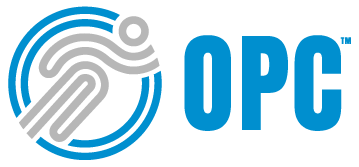Artificial limbs are essential to improve the quality of life of people living without limbs. Artificial limbs can improve the quality and life expectancy of those who are unable to use their limbs. Bionic limbs such as bone-anchored prostheses use implants directly inserted into the living bone for more stability. For greater stability, bionic limbs like bone-anchored prostheses are made with implants that are directly inserted into the bone. However, this technology still causes adverse events. This technology can still cause adverse events. Dr Laurent Frossard, Adjunct Professor of Bionics, and Professor David Lloyd, Professor of Biomechanical Engineering, combine biomechanics and computational modelling to develop a new integrated, wearable and non-invasive diagnostic device relying on the design of a digital twin of the residuum, which may ultimately improve the quality of life of people suffering from limb loss. Dr Laurent Frossard (Adjunct Professor in Bionics) and Professor David Lloyd (Professor of Biomechanical Engineering) combine biomechanics with computational modeling to create a new integrated diagnostic device that is wearable, non-invasive, and uses a digital twin. This could improve the quality and life expectancy of those suffering from limb loss.
Over 2.2 million Americans are currently living with limb loss, and this number may double by 2050. More than 2.2 million Americans suffer from limb loss at the moment. This number could double by 2050. The main causes of amputations are disease (such as diabetes) and trauma (car accidents or military conflicts). Amputations can be caused by disease (such diabetes) or trauma (car accidents, military conflicts). Limb amputation requires a lifetime of care. A lifetime of care is required for limb amputation. For each amputation, the cost of prosthetic care has been estimated to range between $1.4 and $2.8 million over a lifetime. Prosthetic care costs for each amputation can range from $1.4 to $2.8 million per lifetime.
The everyday use of artificial limbs is critical to the wellbeing of these individuals. These individuals’ wellbeing is dependent on their daily use of artificial limbs. Orthopaedic surgeons, rehabilitation specialists and prosthetists work together and make bespoke recommendations with the intention to maximise comfort, stability and mobility of prosthetic fittings. Prosthetic fittings can be made more comfortable, stable, and mobile by orthopaedic surgeons and rehabilitation specialists. However, this is not without difficulty. This is not easy.
Challenges of current prosthetic attachment
Prosthetic fittings that allow sustained high-levels of daily activities are difficult to achieve. It is difficult to find prosthetics that can allow for sustained high levels of daily activities. Indeed, skin, nerves, muscles and bones of the residuum (also called the stump) may be compromised by acute and chronic skin issues, oedema, neuroma, muscle contractures, or fractures. The skin, nerves and muscles, as well as the bones, of the residuum (also known by the stump), may be affected by chronic and acute skin conditions, oedema and neuroma, contractures or muscle injuries, and even fractures. This makes daily prosthetic loading difficult to withstand. It is therefore difficult to support daily prosthetic loading. Moreover, sockets are challenging to fit around stumps with incongruous shapes. It is also difficult to fit sockets around stumps of irregular shapes. Patients living in hot conditions are particularly disadvantaged because perspiration due to heat and humidity makes sockets difficult to wear. Hot conditions make sockets more difficult to wear for patients who sweat in heat and humidity. Challenges with prosthetic fittings lead to frequent and, too often, permanent prosthesis abandonment in 25-57% of cases. Prosthetic fitting problems can lead to permanent and frequent abandonment of prostheses in 25-57% cases.
Role of bionic solutions
Alternatively, individuals experiencing overwhelming socket issues can be fitted with bionic limbs. Individuals with severe socket problems can also be fitted bionic limbs. A bionic solution is a technological platform relying on three interconnected pillars: the engine, the chassis, and the power-assisted steering wheel. Bionic solutions are a technological platform that relies on three interconnected pillars: engine, chassis and power-assisted steering.
Advanced prosthetic components (the engine), such as microprocessor-controlled robotic-like artificial joints, are the central part of bionic solutions. Suitable attachment to the residuum (the chassis) can be achieved through direct skeletal attachment using osseointegrated implants, rather than a socket. Direct skeletal attachment with osseointegrated implant can be used to attach the residuum (the frame) to the appropriate location. The inner part of the implant is inserted into the living bone. Insert the inner portion of the implant into the living bone. The outer part protrudes from the skin of the residuum, enabling external attachment of the bone-anchored prosthesis. The outer portion protrudes from skin on the residuum to allow external attachment of the bone-anchored prosthesis.
Intuitive control of advanced components (the power-assisted steering wheel) can be achieved using sensors harvesting physiological signals from the brain, nerves or muscles. Sensors that harvest physiological signals from the brain or nerves can enable intuitive control of complex components, such as the power-assisted steering wheels. Bionic limbs therefore have physical connections with all sorts of body parts like the brain, nerves, muscles, skin and bone. The bionic limbs can be connected to all body parts, including the brain, nerves and muscles.
The digital twin of the residuum is a virtual replica living inside the computer. The digital twin of residuum can be described as a virtual copy that lives inside the computer.
Strengths of bionic limbs Bionic limbs have many strengths
Promising life-changing benefits of bionic limbs showed by long-term efficacy studies are compelling for patients. Patients are enticed by the promise of life-changing bionic limbs as demonstrated by long-term efficacy trials. The direct attachment of the prosthesis through an osseointegrated implant has immediate benefits. An osseointegrated implant allows for the attachment of the prosthesis directly. It eliminates all typical burden associated with a socket, particularly the residuum’s skin problems. It removes all the usual burdens associated with sockets, especially skin problems. It eases attachment and removal of the prosthesis. It makes it easier to attach and remove the prosthesis. It also provides a much more comfortable sitting position and allows a much larger range of movements. It allows for a more comfortable sitting position, and allows for a wider range of movement.
There is overwhelming evidence that bionic limbs attached to osseointegrated implants significantly improve mobility. The evidence is overwhelming that bionic limbs attach to osseointegrated implant significantly improve mobility. Users walk faster for longer bouts of daily and recreational activities. Users can walk faster and do more recreational and daily activities. This is especially obvious for young and active individuals. This is particularly true for active young people. Users of osseointegrated implants report that they feel that their prosthesis is more like a part of their body; they experience a phenomenon called osseoperception. Implant users who have osseointegrated implants say that the prosthesis feels more like a part their body. This phenomenon is called osseoperception. Practically, they can feel more vibrations. They can sense more vibrations. This helps to feel where the prosthetic foot is on the ground and the type of surface the person is walking on. This allows them to sense where the prosthetic foot is relative to the ground, and what type of surface they are walking on. Dr Frossard has published studies showing that when compared to typical socket prostheses, bone-anchored bionic prostheses significantly improved quality of life by about 17%. Dr Frossard published studies that showed bone-anchored bionic prostheses had a significantly higher quality of life than traditional socket prostheses.
Weaknesses of bionic limbs Bionic limbs: Weaknesses
Occurrence and severity of adverse events with bone-anchored bionic prostheses are yet to be fully resolved. The severity and incidence of adverse events that can occur with bone-anchored bionic prostheses is still unknown. Bionic limbs can potentially cause issues with implant stability, bone fracture, breakage of the implant parts and infection. Implant stability, bone fracture, implant part breakage, infection, and implant stability can all be issues that bionic limbs could cause. All these adverse events have several common negative effects. These adverse events can have many common negative consequences. They cause pain. They can cause pain. They significantly disturb the lifestyle because they limit usage of the prosthesis for prolonged duration. Because they restrict the use of the prosthesis for a prolonged period of time, they can significantly disrupt a person’s lifestyle. They also cost money paid either by the healthcare system or the users themselves as out-of-pocket expenses. They can also be costly, either to the healthcare system or by the users as out-of pocket expenses.
A need to improve There is a need to improve
Efforts must be made to lessen severity and incidence of adverse events of bone-anchored bionic prostheses. It is important to reduce the incidence and severity of adverse events in bone-anchored bionic prostheses. Prostheses must become safer and more accessible to a large population worldwide. Prostheses should be safer and easier to access for a wide range of people worldwide. Significant reduction of the risks is a prerequisite for unequivocal approval from international governing bodies such as the FDA. A significant reduction in the risk is required for international governing bodies like the FDA to approve the product. Safer treatment will also warrant a more successful development of the next generation of brain-activated neuroprostheses. A safer treatment will ensure a more successful development for the next generation brain-activated neuroprostheses.
A new radical approach
Dr Frossard and Prof Lloyd believe that one way to address the current shortcomings of bone-anchored bionic prostheses is to have a radical new approach relying on the design of a ‘digital twin’ of the residuum, to assess residuum health under real-life conditions. Prof Lloyd and Dr Frossard believe that a radical new approach is needed to address the shortcomings of bone-anchored prostheses. This involves the creation of a digital twin of the residuum to evaluate residuum health in real-life situations. Indeed, adverse events primarily depend on residuum health, which is usually assessed through physical examinations, medical tests and imaging modalities. Adverse events are largely dependent on residuum condition, which is typically assessed by medical tests and imaging modalities. This is not sufficient to examine the effects of the prosthesis while wearing it. It is impossible to evaluate the prosthesis’ effects while it is on.
This is why Dr Frossard and Prof Lloyd are currently developing an integrated, wearable and non-invasive diagnostic device. Prof Lloyd and Dr Frossard are currently working on a wearable, non-invasive diagnostic device. By computing physiological measures related to residuum health and creating a virtual replica (digital twin) of the residuum, the diagnostic device could improve care of patients and facilitate their rehabilitation. The diagnostic device can be used to compute physiological measures and create a virtual twin (digital twin), of the residuum. This will allow patients to receive better care and rehabilitation.
Features of the diagnostic device
Different sensors assess the mechanical constraints applied by the bone-anchored bionics on the residuum and measure the resulting movements of the tissues (bone, muscle, tendon, fat, skin) within the residuum. Different sensors evaluate the mechanical constraints placed on the residuum by bone-anchored bionics and measure the resulting movement of tissues (bone, muscle tendon, fat, skin). The back end the device consists of the software integrating all this information into a personalised digital twin of the residuum. The software that integrates all of this data into a personalized digital twin of each residuum is the backend of the device. Basically, the digital twin of the residuum is a virtual replica living inside the computer. The digital twin of a residuum basically consists of a virtual replica that lives inside the computer. It corresponds to the high-fidelity physics-based model of the different tissues constituting the residuum. It is a high-fidelity, physics-based model
that depicts the various tissues in the residuum. The front end of the device consists of a handheld device (such as a smartphone) that provides a visual animation of the model in real time so that patients and clinicians equipped with the device and see can how movements impact the inside of the body. The device’s front end is a handheld device, such as a smartphone. It provides visual animations of the model in real-time so patients and clinicians can see how their movements affect the inside of the body.
The diagnostic device provides a radically new and empowering experience for patients. Patients will find the diagnostic device a revolutionary and powerful experience.
Improving rehabilitation for patients
The diagnostic device provides a radically new and empowering experience for patients. Patients will find the diagnostic device a revolutionary and powerful experience. It can help them monitor how their loading positions stimulate specific zones of the implant in real time using a friendly-user interface and guide them to adopt pain-free positions. The device can monitor how patients load and stimulate certain areas of the implant using a friendly interface. It also helps them to find pain-free positions. By improving stability, it can reduce risks of loosening, fractures and infections. It can improve stability and reduce the risk of infection, fractures, and loosening. It can also allow patients to better inform clinicians about how a treatment or intervention feels. Patients can communicate with their doctors about the effects of treatment and how they feel. Altogether, this new approach can increase the quality of life of individuals suffering from limb loss. This new approach can improve the quality of life for people who have lost limbs.
Making the unknown visible to clinicians
The digital twin provides detailed personal records on residuum health, osseointegration and adverse events. The digital twin gives detailed records of osseointegration, residuum and adverse events. The diagnostic device therefore creates tremendous opportunities to extend precision medicine: by assisting clinicians in detecting residuum issues during rehabilitation and beyond, it helps them make more accurate decisions. This diagnostic device opens up a world of possibilities for precision medicine. It assists clinicians in identifying residuum problems during rehabilitation and beyond. It also helps them make better decisions. In the long term, the accumulation of data contributes to developing models that can predict adverse events such as unfavourable bone remodelling or elevated inflammatory response. The accumulation of data can be used to develop models that can predict adverse outcomes such as unfavorable bone remodelling and elevated inflammatory response.
Reducing healthcare expenses
The diagnostic device could potentially improve cost-effectiveness of bionic solutions by reducing over-prescription when considering care interventions. The diagnostic device can help improve the cost-effectiveness and efficiency of bionic solutions by reducing prescriptions when it comes to care interventions. By improving residuum health, the diagnostic device could also reduce the lifetime financial burden on healthcare system of treatments due to poor residuum health of patients. The diagnostic device can improve residuum and reduce the financial burden that healthcare systems will have to pay for treatment costs.
Developing the next generation of bionic limbs
The digital twin enables the simulation of specific effects from a particular intervention before actually doing the intervention. The digital twin allows for the simulation of specific outcomes from an intervention before actually performing it. It allows us to predict outcomes and, possibly, anticipate the likeliness of adverse events. It can be used to predict and even anticipate adverse events. It can enable immediate adjustments to residuum loading, stresses and strains, and therefore potentially improve long-term residuum health. It allows for immediate adjustments to residuum loads, stress and strains and can potentially improve long-term health.
The use of a digital twin is essential to develop intuitive control of advanced components using sensors harvesting physiological signals from the brain, nerves or muscles. A digital twin is necessary to enable intuitive control of advanced components via sensors that harvest physiological signals from the brain, nerves and muscles. The aim is to enable patients to control bionic limbs by merely thinking about the action they want to perform. Patients will be able to control bionic legs by simply thinking about what action they wish to take. The diagnostic device can enable safer developments of personalised neuroprostheses by making the link between the command (like the contraction of muscles) and the functions of the prosthesis (such as ascending stairs, grabbing an object). This diagnostic device allows for safer development of personalized neuroprostheses. It links the command (such as the contraction of muscles), and the prosthetic’s functions (such climbing stairs, grasping an
object).
The digital twin will also allow new neuroprostheses to reverse the current dynamics between the users and their prosthesis. New neuroprostheses will be able to reverse the current dynamic between users and their prosthesis through the digital twin. At the moment, despite advances in microprocessors controlling the prosthesis, users must adapt to the functions of their prostheses. Despite advances in microprocessors controlling prostheses, users still need to adapt to their prostheses’ functions. With the new neuroprostheses, it will work the other way around: the prostheses will respond to the individual command of the users. The new neuroprostheses will do the opposite: prostheses will respond to each user’s individual commands.





